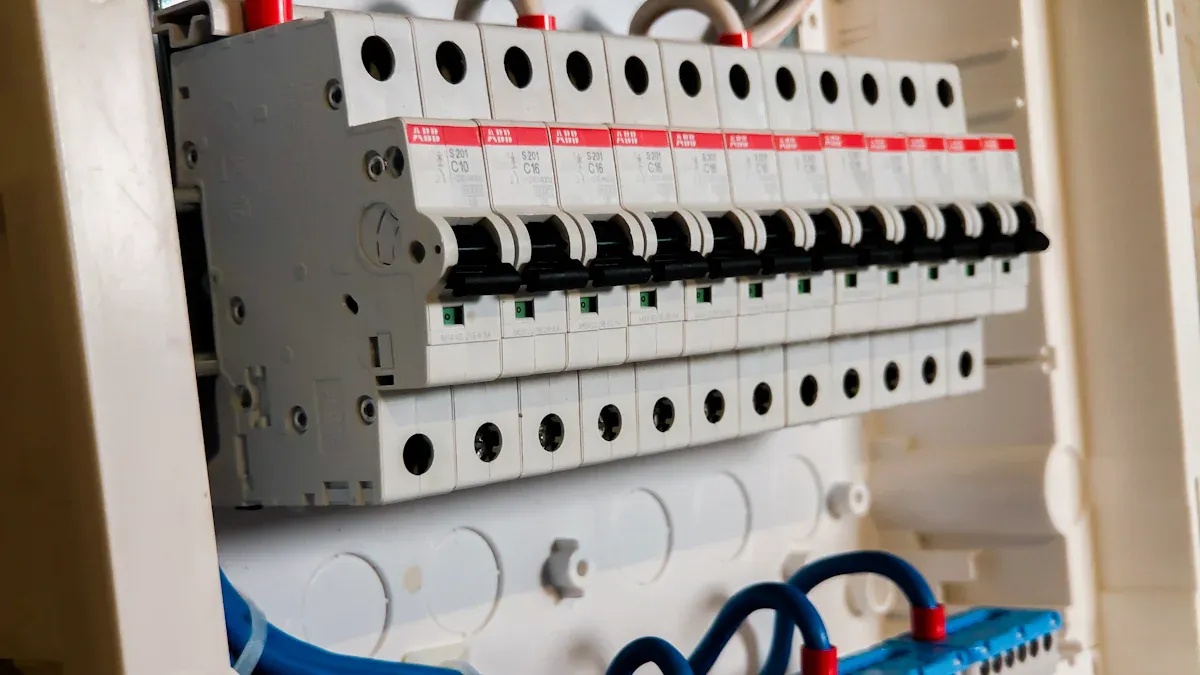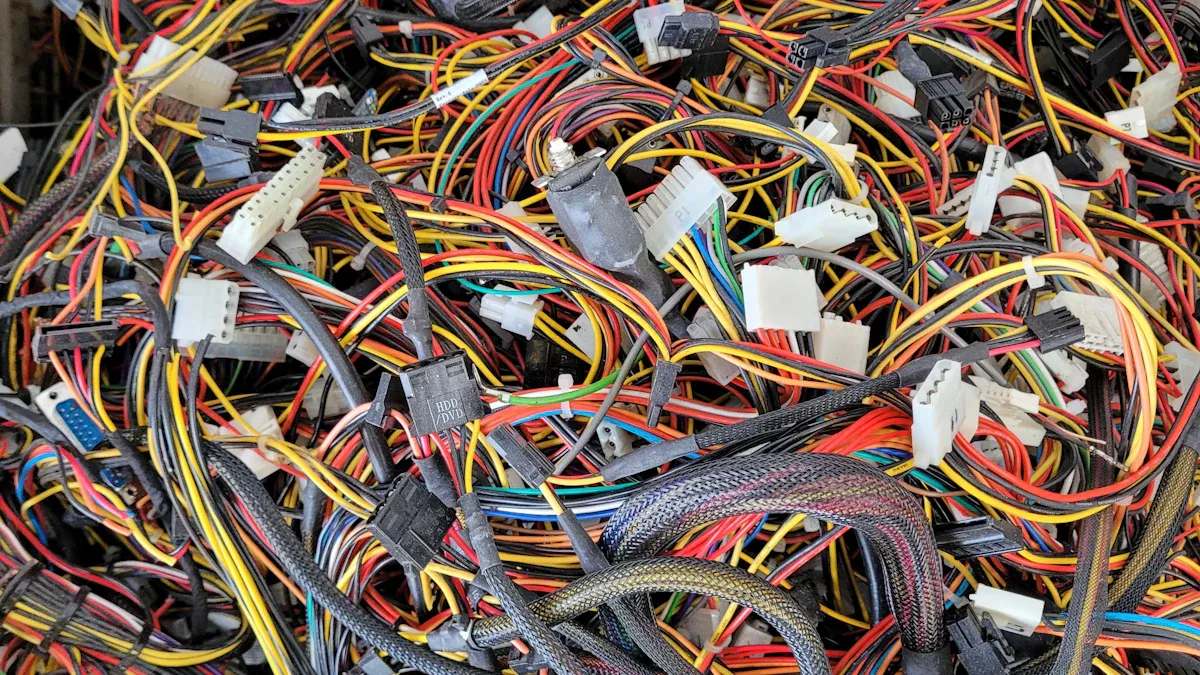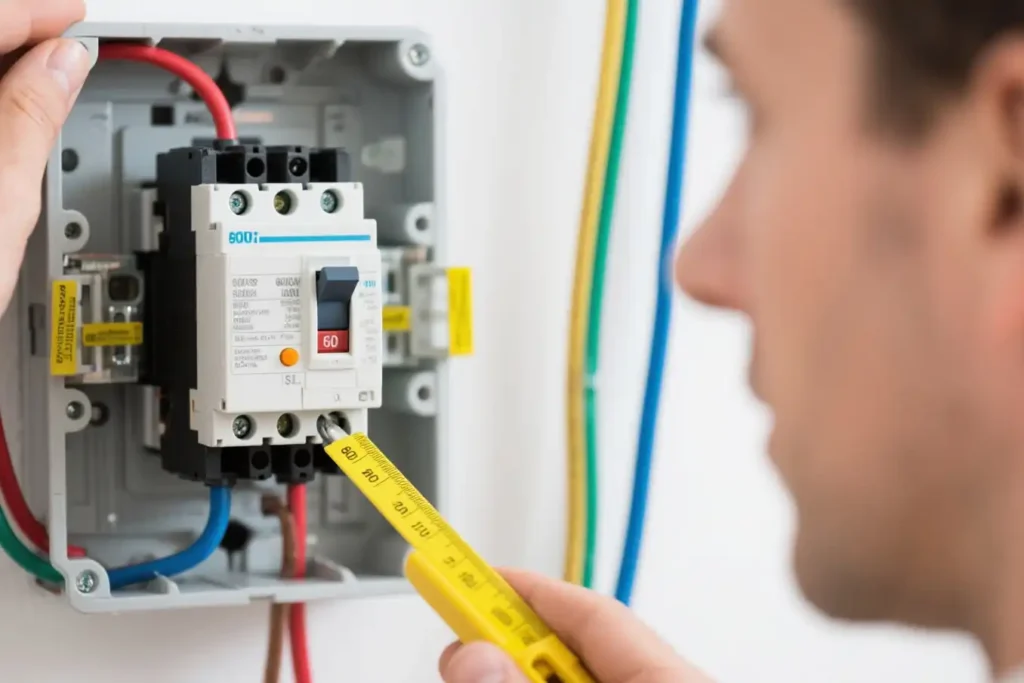Choosing the right wire size for a 60 ampere circuit breaker keeps you safe and protects your home. If you use wires that are too small, they can get too hot. Wires can burn or melt. Breakers can smoke and smell like burning plastic. Loose connections make the heat problem worse. This can make things much hotter than they should be. Fire safety groups say these problems can cause fires before the breaker shuts off. You should always follow NEC codes. You should also listen to professional electricians to stay safe.
Key Takeaways
- Pick the correct wire size for a 60 ampere circuit breaker. This helps stop wires from getting too hot and causing fires. – Follow National Electrical Code (NEC) rules to keep your house safe. This also helps you avoid trouble with the law or insurance. – Use 4 AWG copper or 3 AWG aluminum wire for safety. These wires can handle the power needed for long use. – Use a bigger wire if the wire has to go far. This helps stop voltage drop and keeps your system working well. – Always get a licensed electrician to pick the right wire size. This makes sure the job is done safely and correctly.
Importance of Wire Size
Safety Risks
Picking the right wire size for a 60 ampere circuit breaker is very important. Safety should always come first. If the wire is too small, it cannot carry all the electricity. This makes the wire get hot fast. Hot wires can melt or burn their insulation. This could start a fire in your house. Your electrical system and appliances can also get damaged.
Tip: Always look at the wire gauge before you put in or change a circuit. The wrong size wire can cause big safety problems.
Here is a table that lists the main safety risks if you use the wrong wire size:
| Safety Risk / Concept | Explanation |
|---|---|
| Overheating due to insufficient ampacity | A wire that is too small for a 60 ampere circuit breaker heats up, melts insulation, and can cause fires. |
| NEC 80% Breaker Rating Rule | Wires must handle at least 125% of the breaker rating (75 amps for 60 amp) to prevent overheating. |
| Incorrect wire gauge example | 6 AWG wire rated for 65 amps is not enough for a 60 amp breaker, risking failure and heat damage. |
| Voltage drop consideration | Long wire runs need larger wires to avoid overheating and fire risk. |
| Using too large wire | Not a safety risk, but it costs more and is less efficient. |
Using the right wire size helps your electrical system last longer. You will not need to fix things as often. You also save money on repairs. Your home stays safe and your electrical system works well.
Code Compliance
You have to follow the National Electrical Code (NEC) when you put in or change a 60 ampere circuit breaker. The NEC has rules for wire sizes to keep people safe and stop fires. If you do not follow these rules, you can have big problems.
Here is a table with some important NEC rules about wire size:
| NEC Reference / Topic | Details / Wire Size / Ampacity |
|---|---|
| NEC Table 310.15(B)(16) | #4 AWG copper or #3 AWG aluminum are suitable for 60A breakers |
| NEC Section 210.24 | Sets branch circuit conductor sizing for 60A breakers |
| NEC Sections 210.19(A), 215.2, 230.42(A) | Defines continuous load limits and ampacity requirements |
| NEC Article 440 | Covers wire sizing for motors and HVAC systems |
| Ampacity and Wire Size | #4 AWG copper rated up to 85A; #3 AWG aluminum rated up to 75A |
| 125% Rule for Continuous Loads | Continuous load must not exceed 80% of breaker rating |
| Voltage Drop Considerations | Upsize wire for long runs to avoid voltage drop |
If you do not follow NEC rules, you could face:
- Fires or electric shocks that hurt people.
- Trouble with the law or your insurance.
- Power problems that mess up your day.
- A bad name if you own a business.
- More money spent fixing things later.
When you follow the NEC and use the right wire size for your 60 ampere circuit breaker, you keep your home and family safe. You also save money and make sure your electrical system works for a long time.
60 Ampere Circuit Breaker Wire Size

Recommended Gauges
When you install a 60 ampere circuit breaker, you need to choose the right wire size. Electricians recommend this because the wire must safely carry the current without overheating. If you use a wire that is too small, it can get hot and cause a fire. This is why you should always follow the National Electrical Code (NEC) and industry standards.
You will often see electricians suggest these wire sizes for a 60 ampere circuit breaker:
| Wire Gauge | Material | Ampacity at 75°C | Why Recommended? |
|---|---|---|---|
| 6 AWG | Copper | Minimum suitable | Used as a minimum, but not the best for safety margin |
| 4 AWG | Copper | 85 Amps | Best choice for safety and future needs |
| 3 AWG | Aluminum | 75 Amps | Good choice if using aluminum wire |
You might wonder why you cannot just use the smallest wire that meets the amp rating. The answer is safety. The NEC says you should not load a wire more than 80% of its ampacity for continuous loads. For a 60 ampere circuit breaker, this means the wire should handle at least 75 amps. That is why 4 AWG copper or 3 AWG aluminum wires are the best choices. They give you a safety margin and help prevent overheating.
Note: Copper wire is usually the default choice unless your breaker and panel are marked for aluminum. Always check the labels before you decide.
Ampacity and Voltage Drop
Ampacity means the maximum amount of electrical current a wire can carry before it gets too hot. You need to pick a wire with enough ampacity for your 60 ampere circuit breaker. If you use a wire with low ampacity, it can overheat and damage your system.
Sometimes, you need to use a larger wire than the minimum size. This happens when you have a long distance between your breaker panel and the device you want to power. As electricity travels through the wire, it loses some voltage. This is called voltage drop. If the voltage drops too much, your appliances may not work right, and the wire can get even hotter.
Here are some reasons why you might need to upsize your wire:
- You have a long wire run, such as over 100 feet.
- You want to plan for future upgrades, like adding more appliances or an electric vehicle charger.
- You want to reduce energy loss and keep your system efficient.
For example, if you run a 60 ampere circuit breaker to a subpanel 400 feet away, you should use a larger wire, such as 2 AWG copper or even 2/0 aluminum. This keeps the voltage drop within safe limits (usually less than 3% for feeders).
Tip: Always check the distance and the load before you pick your wire size. Upsizing now can save you money and trouble later.
Choosing the right wire size for your 60 ampere circuit breaker is not just about following the rules. It is about keeping your home safe, making your system last longer, and preparing for the future. When you understand why wire size matters, you can make better choices for your electrical projects.
Risks of Undersized Wires

Overheating
If you use wires that are too small for a 60 ampere circuit breaker, they can get very hot. The wire cannot carry all the electricity needed. This makes the wire heat up each time you use your appliances. Over time, the insulation on the wire gets weak. You might not notice the damage, but it can get worse inside your walls.
If the insulation melts, the wire might spark and cause a fire. National fire data says overloaded electrical systems cause over 50,000 house fires every year in the United States. Arc faults alone cause about 30,000 fires each year.
Old wiring types, like knob-and-tube or aluminum wiring, make things worse. These wires have insulation that wears out and loose connections. When you use new appliances with old circuits, the wires heat up even faster. Insurance companies often will not cover homes with less than 100-amp service because of these fire dangers.
Here are some reasons why wires overheat when they are too small:
- The wire gauge is too small for the current.
- The breaker might not trip fast enough to stop the flow.
- Heat damages insulation and raises fire risk.
- Old wiring types wear out faster and cannot handle new loads.
System Failure
Wires that are too small do not just cause fires. They also make your electrical system fail and mess up your day. When wires get too hot, they might not carry fault current the right way. This means fuses or breakers may not trip when needed. You might think your system is safe, but a hidden problem can cause dangerous heat.
In homes with 60 ampere circuit breaker panels, you may see blown fuses or tripped breakers often. Some people try to fix this by using bigger fuses, but this makes overheating and fire more likely. If you use many appliances on a small wire, the wires get hot and might fail without warning.
Insurance companies watch these risks closely. If your home has old wiring or work done without a license, you may pay more or lose coverage. Upgrading your panel and wiring to meet today’s rules keeps your home safe and your insurance good.
Using the right wire sizes and modern panels lowers the chance of overheating, fire, and system failure. You keep your family safe and avoid expensive repairs.
Applications and Cable Types
Common Uses
You might ask why you need a 60 ampere circuit breaker. Electricians use this size for big appliances or special machines. You often see 60 amp breakers for subpanels, hot tubs, or air conditioners. They are also used for Level 2 EV charging stations. These things use a lot of power and need strong circuits.
In businesses, a 60 amp breaker powers lights or large machines. You can find them in workshops with many tools. Garages with lots of appliances use them too. New rules say you need more power for things like water heaters, EV chargers, and solar systems. This is because homes and businesses use more electricity now than before.
If your breaker is too small, your appliances may not work well. The breaker could trip. If your breaker is too big for the wire, it can get too hot and cause a fire.
Here is a table that shows how much power a 60 amp, 240-volt circuit gives:
| Circuit Breaker Size | Voltage (V) | Amperage (A) | Power Capacity (Watts) |
|---|---|---|---|
| 60-amp circuit | 240 | 60 | 14,400 |
Choosing the Right Cable
It is important to pick the right cable for a 60 amp circuit. The right cable keeps your system safe and follows the rules. Electricians use THHN/THWN cables in conduit. NM-B Romex is for inside use. UF-B is for outside or buried wires. MC cable is good for inside and dry outside places. Service entrance cables go to main panels and feeders.
If you use the wrong cable, it can get too hot or start a fire. You might also fail an inspection. Many people make mistakes by using leftover wire or not reading labels. Some do not follow the rules. Always match the wire size to the breaker. For a 60 amp breaker, use 4 AWG copper or 3 AWG aluminum. Use a bigger wire if the run is long to stop voltage drop.
Tip: Always read the instructions for your appliances. Check local rules before you pick your cable. This helps you avoid mistakes and keeps your home safe.
You need the right wire size for a 60 ampere circuit breaker to keep your home safe. Electrical safety groups say correct wire sizing prevents overheating, wiring damage, and fire risks. Always follow these steps:
- Use the right wire gauge for your breaker and load.
- Check the total amperage of all devices on the circuit.
- Hire a licensed electrician for installation and inspection.
Never skip NEC guidelines or take shortcuts. You protect your family and property when you follow the rules.
FAQ
Why do electricians recommend upsizing wire for long runs?
When wires are very long, voltage drops. This can make your appliances not work well. Electricians want to stop overheating. They also want to keep your things safe. Using a bigger wire helps lower voltage drop. It makes your system work better.
Why is copper wire often preferred over aluminum for 60 amp circuits?
Copper wire moves electricity better than aluminum. It has less resistance and is safer. Copper wire lasts longer and does not rust easily. This means you will have fewer problems.
Why does the NEC require specific wire sizes for circuit breakers?
The NEC wants everyone to be safe. Using the right wire size stops overheating and fire. You must follow these rules to pass inspections. This keeps your home safe.
Why can using a larger wire than required be a problem?
Bigger wire costs more money and is harder to use. You might spend too much and waste time. Electricians want you to pick the right size. This keeps things safe and works well.
Why should you consult a licensed electrician before changing wire sizes?
Electricians know the safety rules and codes. They help you avoid mistakes and danger. A licensed electrician will help you pick the best wire.
See also
How to choose wires for your 220V 15 ampere circuit breaker
What size of wire is needed for a 30 ampere circuit breaker
What size of wire is suitable for a 30 ampere circuit breaker
What Makes 16 Ampere Circuit Breakers Essential for Home Safety
Your checklist for selecting a 200 ampere MCCB in 2025



